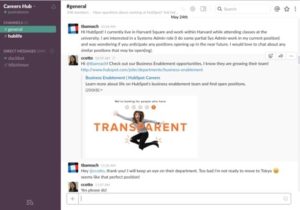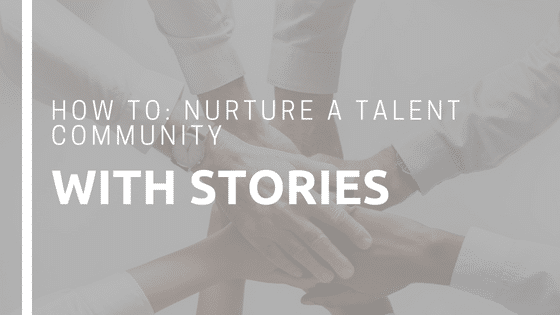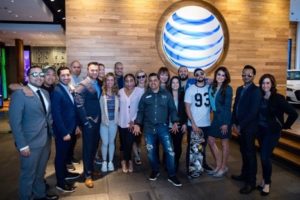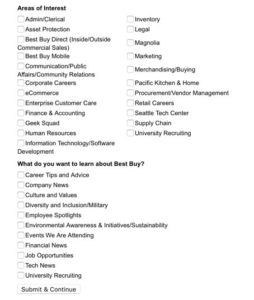How to Nurture a Talent Community Using Stories
Before I found my internship at Stories Inc., I searched all over LinkedIn, sought out all my connections and signed up for talent networks.
Talent networks turned out to be highly disappointing. I found myself receiving hundreds of job postings from companies, but none of them were relevant. They focused solely on my location, not on my job skills or interests. I would continually scroll through and immediately delete the emails, and I eventually unsubscribed altogether. I felt like another number on a generic list. My name wasn’t even in the email! At the time, I had no idea the difference in talent networks and talent communities.
The big difference I’ve seen and experienced? Talent communities are about building relationships.
If you’re currently utilizing a talent network and the application rate is lower and unsubscribe rates are higher than expected, then it might be time to make the switch from talent networks to talent communities. The signs indicate that there needs to be a stronger human touch. A community should be nurtured with personalized content, not just emailed non-specific job postings.
Content for Talent Communities
We strongly believe in the power of stories. Stories are more personal, easier to remember and overall easier to digest. One of the easiest ways to increase engagement is adding photos or videos. Facebook posts with images had 2.3x more engagement than those without images. These same ‘rules of engagement’ apply to creating engaging talent communities.
Career advice
Whether it’s specific to the company industry, to the job positions, or just advice on applying for a job, it’s valuable because every company has slightly different ways of doing things. Most workers are continually looking for more knowledge and ways to improve themselves. Offering insight into the industry helps create even smarter, better prepared candidates.
A day in the life
Even if it’s short story about an employee’s unique day – or average day– it’s a quick and easy way to connect the community to the current employees. If there isn’t enough time or resources, encourage employees to post their stories on social media, and then gather those social media posts to share!
Even if the content is already posted on the career page, it can still be used in talent communities. People who opt-in probably haven’t watched, read or looked at every post to learn about the company, and they likely aren’t returning to see if the careers page was updated from the last time they looked.
Short company updates
People want to know what’s happening at your company. If they are interested in working with there, then they want to know what it is like on a daily, weekly, and monthly basis. Whether it’s sharing details about the pot-luck meeting, the community service event, or the group workout class, people want to know about those details.
These details help to shape a clearer picture of what the company culture is like and can give candidates a good idea of whether they would fit in or not. Even in large companies with multiple sites, the other employees want to know what is going on at other sites.
Nurturing a Talent Community Using Stories
Segment audiences
If people submit their interest in job positions, their skills, or their personas, then use this information to section them. This allows you to send better, more personalized content that a subscriber would want to read.
On the right is Best Buy‘s segmenting questions! They ask about what your area of interest is, but also want you want to learn from them. This makes it easy for Best Buy to send personalized content to the talent community members.
Two-way communication
 This community is looking for further engagement with the companies they’re interested in working for. If you open the door for a conversation than you can answer what each person is looking for, but also find out what potential candidates are asking most. Take a note from Hubspot, they used Slack to speak with their talent community.
This community is looking for further engagement with the companies they’re interested in working for. If you open the door for a conversation than you can answer what each person is looking for, but also find out what potential candidates are asking most. Take a note from Hubspot, they used Slack to speak with their talent community.
Provide real-life meeting opportunities
Getting to meet, and network, with the people in your talent community benefits both the recruiter and the potential candidates in the community. For the recruiter, they get to see the culture and personality behind the resumes without scheduling specific interviews.
So, when they finally apply for a job, they already have an idea of the real person behind that resume. As for the community members, they get to meet with the employees at the company and other people in the community, giving them a sense of company culture . This networking between members promotes career mobility regardless of whether it is at your company or not.
On my job hunt, I was looking for an inside look, not just the job postings from talent networks. Building a talent community is only the first step. The next, more important, step is nurturing and fostering strong relationships through stories. Valuable content is key in creating mutually-beneficial talent communities. Get ready to tell your story!



